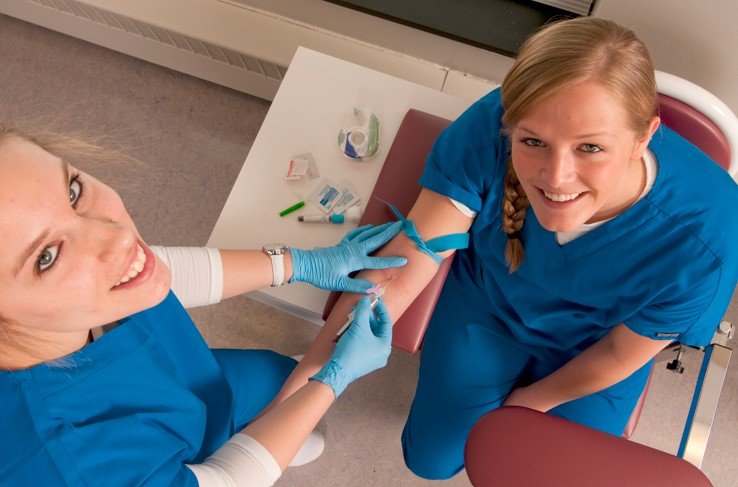Ensuring Compliance with CLIA Regulations: Key Steps for Hospitals
Summary
- Hospitals in the United States must comply with CLIA Regulations to ensure patient safety and quality care.
- To avoid penalties, hospitals can take steps such as implementing robust Quality Control measures, conducting regular audits, and providing ongoing staff training.
- Utilizing technology solutions and partnering with reliable suppliers can also help hospitals maintain compliance with CLIA Regulations.
Introduction
Hospitals in the United States are required to comply with the Clinical Laboratory Improvement Amendments (CLIA) Regulations to ensure the accuracy, reliability, and timeliness of patient Test Results. Failure to adhere to these Regulations can result in penalties, fines, and even closure of laboratory facilities. In this article, we will explore the steps that hospitals can take to ensure full compliance with CLIA Regulations and avoid facing these consequences.
Implement Robust Quality Control Measures
To ensure compliance with CLIA Regulations, hospitals must implement robust Quality Control measures in their laboratory operations. This includes:
- Regular calibration and maintenance of equipment to ensure accurate Test Results.
- Documenting and monitoring the performance of laboratory tests through Quality Control checks.
- Implementing standard operating procedures for all testing processes to minimize errors and ensure consistency.
Conduct Regular Audits
In addition to implementing Quality Control measures, hospitals should conduct regular audits of their laboratory operations to ensure compliance with CLIA Regulations. This includes:
- Reviewing and analyzing Test Results, documentation, and laboratory processes for accuracy and consistency.
- Identifying areas of non-compliance and implementing corrective actions to address any issues.
- Engaging with external auditors or consultants to provide an objective assessment of the laboratory's compliance with CLIA Regulations.
Provide Ongoing Staff Training
One of the key components of maintaining compliance with CLIA Regulations is providing ongoing training and education to laboratory staff. This includes:
- Ensuring that all staff members are properly trained on laboratory procedures, safety protocols, and Quality Control measures.
- Offering opportunities for continuous education and professional development to keep staff up-to-date on the latest CLIA Regulations and guidelines.
- Encouraging a culture of compliance and accountability among all laboratory staff members.
Utilize Technology Solutions
Technology solutions can also help hospitals maintain compliance with CLIA Regulations by streamlining laboratory operations and enhancing Quality Control measures. This includes:
- Implementing laboratory information management systems (LIMS) to automate test result reporting, data storage, and inventory management.
- Utilizing Electronic Health Records (EHR) systems to integrate laboratory data with patient records and improve communication between Healthcare Providers.
- Investing in advanced analytical tools and equipment to enhance the accuracy and efficiency of laboratory testing processes.
Partner with Reliable Suppliers
In addition to implementing internal measures, hospitals can also partner with reliable suppliers and vendors to ensure compliance with CLIA Regulations. This includes:
- Selecting suppliers that meet CLIA certification requirements and adhere to industry standards for quality and safety.
- Regularly evaluating and monitoring supplier performance to ensure timely delivery of supplies, equipment maintenance, and compliance with Regulations.
- Establishing strong communication channels with suppliers to address any issues or concerns related to compliance and Quality Control.
Conclusion
Ensuring full compliance with CLIA Regulations is essential for hospitals to maintain the accuracy and reliability of laboratory Test Results, thereby safeguarding patient safety and quality care. By implementing robust Quality Control measures, conducting regular audits, providing ongoing staff training, utilizing technology solutions, and partnering with reliable suppliers, hospitals can mitigate the risk of penalties and ensure compliance with CLIA Regulations.

Disclaimer: The content provided on this blog is for informational purposes only, reflecting the personal opinions and insights of the author(s) on the topics. The information provided should not be used for diagnosing or treating a health problem or disease, and those seeking personal medical advice should consult with a licensed physician. Always seek the advice of your doctor or other qualified health provider regarding a medical condition. Never disregard professional medical advice or delay in seeking it because of something you have read on this website. If you think you may have a medical emergency, call 911 or go to the nearest emergency room immediately. No physician-patient relationship is created by this web site or its use. No contributors to this web site make any representations, express or implied, with respect to the information provided herein or to its use. While we strive to share accurate and up-to-date information, we cannot guarantee the completeness, reliability, or accuracy of the content. The blog may also include links to external websites and resources for the convenience of our readers. Please note that linking to other sites does not imply endorsement of their content, practices, or services by us. Readers should use their discretion and judgment while exploring any external links and resources mentioned on this blog.
